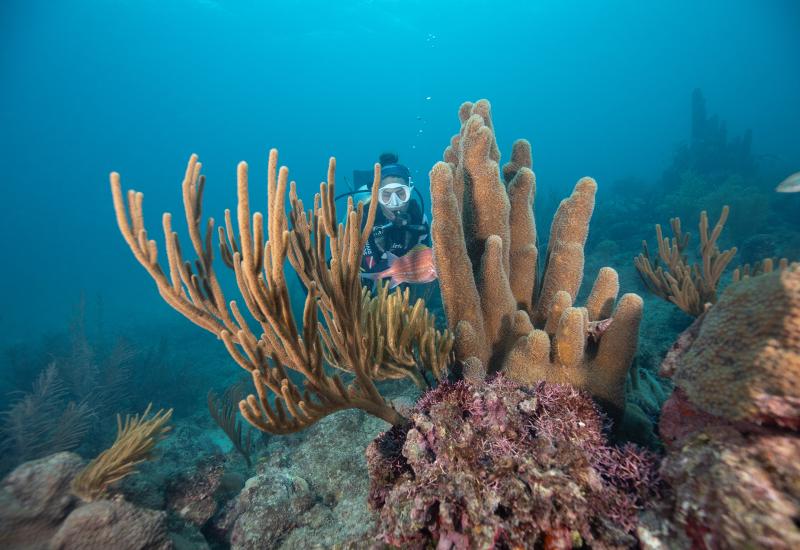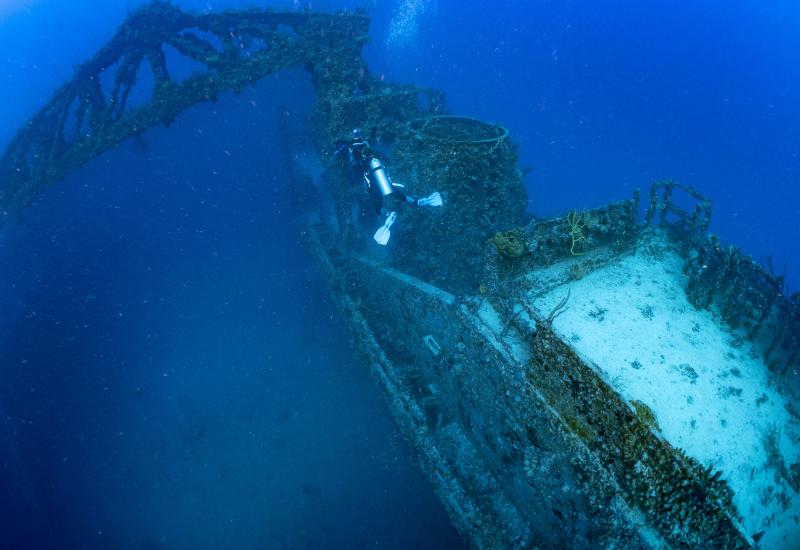What It's Like to Dive a Titan Missile Silo
We drop down into the year 1965, when the United States and the Soviet Union were sparring in a war colder than the surrounding 50-degree water.
Bubbles float above the “Danger: High Voltage” signs and past an emergency shower futilely pointing downward, as we descend more than 100 feet to the missile silo’s floor.
The Titan I missile silo, deemed operational in 1963 and deactivated a few years later, sits underground in central Washington. Pumps meant to deflect groundwater were shut down, causing partial flooding that preserved a moment of American history as an unexpected dive site.
Our dive group caravans in vehicles past brown hills and barren winter trees, by a graveyard of cars and industrial equipment, to a rusted and jagged tube twisting up from the ground. This is the dive entrance: an opened emergency hatch leading to an underground system that once housed multi-ton intercontinental ballistic missiles, control centers, and living quarters. We are about 180 miles from Puget Sound.
Transporting assembled gear and nitrox tanks on our backs, we enter the emergency hatch and climb down the ladder to a dry, subterranean staging area. A system of ropes and buckets lower smaller items. Each diver is required to carry two lights and at least an advanced certification to dive with UnderSea Adventures, the company leasing the silo.
Once prepared to dive, we walk from the staging area into a large, rusting, half-submerged corrugated tunnel. Purposefully placing feet on unseen smaller pipes and stepping over underwater obstacles, we carefully shuffle more than 300 feet through the tunnel with safely inflated BCs.
We dive two flooded silos and one equipment room, our lights dancing with shadows to the rush of raw adventure. Dropping to the bottom and corkscrewing up, we pass rusted beams and crossbars, wiring panels and elevator buttons, maps and labels, dangling doorknobs and lights hanging by frayed wires threatening defeat.
Looking through a mask of cold water (and Cold War) adventure, we witness a time never meant to be underwater, a time when the future was dangerously uncertain and, as always, unknown.
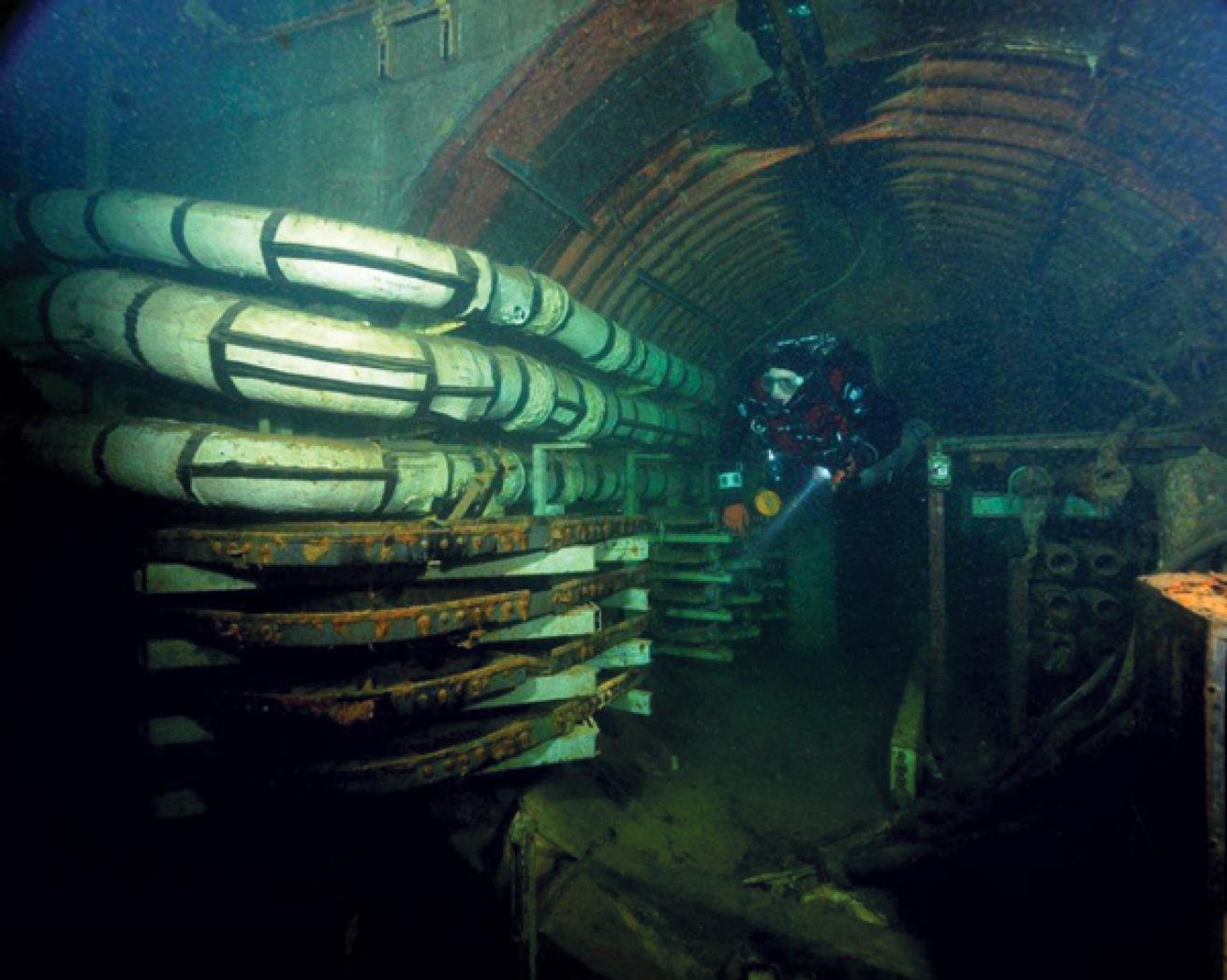
Courtesy Mark Theune, Maritime Documentation Society.
We drop down into the year 1965, when the United States and the Soviet Union were sparring in a war colder than the surrounding 50-degree water.
Bubbles float above the “Danger: High Voltage” signs and past an emergency shower futilely pointing downward, as we descend more than 100 feet to the missile silo’s floor.
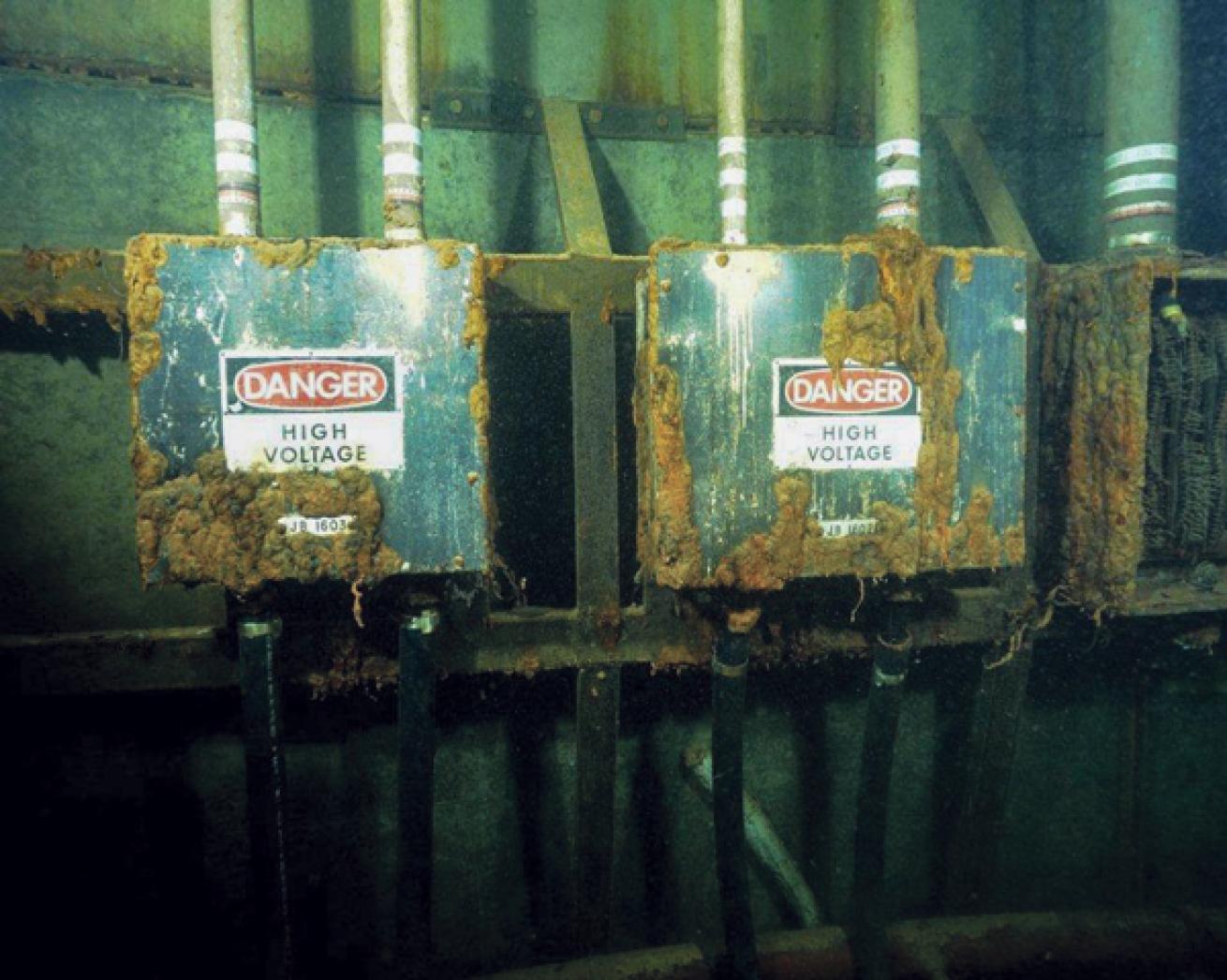
Courtesy Mark Theune, Maritime Documentation Society.
The Titan I missile silo, deemed operational in 1963 and deactivated a few years later, sits underground in central Washington. Pumps meant to deflect groundwater were shut down, causing partial flooding that preserved a moment of American history as an unexpected dive site.
Our dive group caravans in vehicles past brown hills and barren winter trees, by a graveyard of cars and industrial equipment, to a rusted and jagged tube twisting up from the ground. This is the dive entrance: an opened emergency hatch leading to an underground system that once housed multi-ton intercontinental ballistic missiles, control centers, and living quarters. We are about 180 miles from Puget Sound.
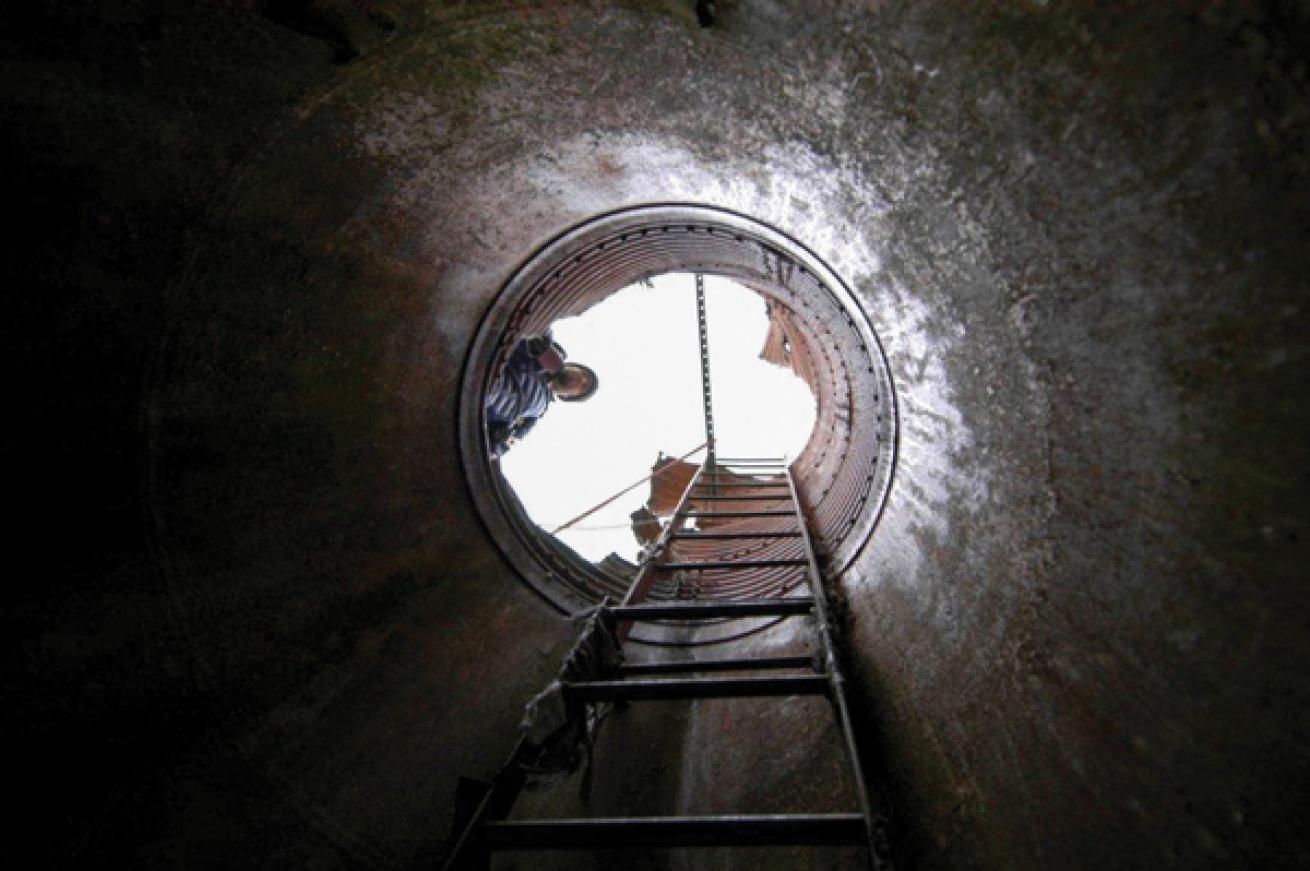
Courtesy Mark Theune, Maritime Documentation Society.
Transporting assembled gear and nitrox tanks on our backs, we enter the emergency hatch and climb down the ladder to a dry, subterranean staging area. A system of ropes and buckets lower smaller items. Each diver is required to carry two lights and at least an advanced certification to dive with UnderSea Adventures, the company leasing the silo.
Once prepared to dive, we walk from the staging area into a large, rusting, half-submerged corrugated tunnel. Purposefully placing feet on unseen smaller pipes and stepping over underwater obstacles, we carefully shuffle more than 300 feet through the tunnel with safely inflated BCs.
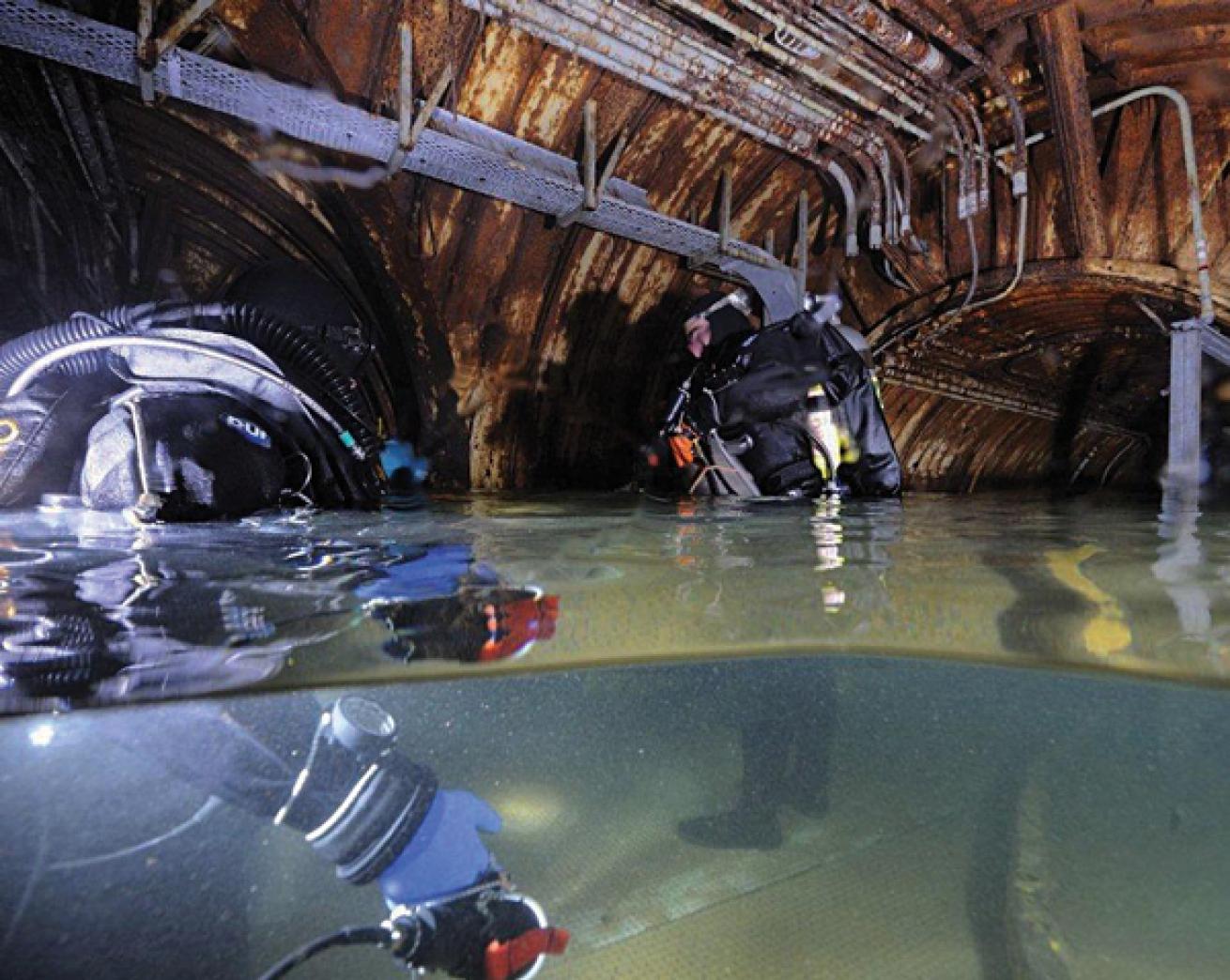
Courtesy Mark Theune, Maritime Documentation Society.
We dive two flooded silos and one equipment room, our lights dancing with shadows to the rush of raw adventure. Dropping to the bottom and corkscrewing up, we pass rusted beams and crossbars, wiring panels and elevator buttons, maps and labels, dangling doorknobs and lights hanging by frayed wires threatening defeat.
Looking through a mask of cold water (and Cold War) adventure, we witness a time never meant to be underwater, a time when the future was dangerously uncertain and, as always, unknown.

